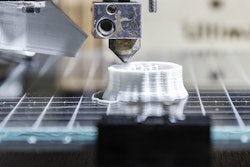In today’s hyper-competitive and increasingly complex marketplace, manufacturers and their global supply chain partners need to find ways to function better, faster and more cost effectively. However, many of these manufacturers face quality challenges that can sideline profitable initiatives and create undue stress up the leadership ladder. But, what most manufacturers don’t realize is that those very quality challenges can be used to create profit.
The majority of manufacturing quality teams merely collects data to monitor production lines, ensure proper quality checks and “fix” out-of-specification processes. Once the data have served their purpose on the plant floor (their first life), they usually go on to die an early death, buried in a database. But, by resurrecting historical quality data, manufacturers can attain top-down, enterprise visibility — from supplier to buyer — and actionable, operational insight (the data’s second life) that unveils new opportunities to reduce costs and drive global business transformation.
Even though the tools exist to use second-life-of-data strategies to inspire company-wide global transformation, few organizations dedicate the resources necessary to see a real financial impact. The following are examples of three ways to use quality data in their second life to strategically turn data into profits and quality into a competitive advantage.
No. 1 - Reduce Overfill for Cost Savings
Whether filling bottles of soda, cartons of ice cream, boxes of cereal or vials of perfume, manufacturers must meet Net Content requirements, while minimizing overfill or giveaway. Often, manufacturers will overfill packages to avoid fines or lawsuits. However, the extra content causes manufacturers to not only waste raw materials, but also lose thousands — if not millions — of dollars in profit. Even though many companies have invested in weighing systems for their net content control efforts, these systems are not beneficial when looking for trends and providing insight on optimized fill weights. Without this insight, manufacturers can lose significant amounts of money from the overfilled packages.
Though it is possible to use quality data to make instant adjustments on a production line and reduce overfill at a particular plant, looking at aggregated data across operations to make enterprise-wide adjustments can exponentially increase the financial impact. For instance, one consumer goods manufacturer eliminated overfill on 12 production lines in a single facility to save more than $250,000 in two years. Applied to multiple facilities, the sustainable annual cost savings exceeds $1 million.
No. 2 - Standardize Machine Settings to Eliminate Variation
Manufacturing facilities run multiple shifts per day, each with a different crew and unique preferences to ensure operations run smoothly and efficiently. But, some strategies prove to be more effective than others if evaluated side-by-side. Hidden variations found in these evaluations are what increase company expenses and create inconsistencies in manufactured goods. When product quality is unreliable, it can lead to costly recalls that affect consumer safety and tarnish brand reputations. Eliminating variability is essential to reducing these risks and unwanted expenses.
In one particular case, a multi-national food manufacturer compared quality data from one shift to the next to identify optimum machine settings. By standardizing on these settings, the manufacturer eliminated variation among shifts, reduced giveaway and the associated ingredient costs, and ultimately produced a more consistent, higher quality product.
No. 3 - Use Single Plant Success to Improve Company-wide Performance
Plant managers typically focus on their own plant’s productivity, compliance and performance. But, corporate executives want to compare plant-to-plant to see how manufacturing operations are performing overall. If quality data from all facilities are rolled up to the C-suite and analyzed, it’s possible to see which plant or manufacturing line is performing the best and worst. Executives can then take the best practices from top-performing plants and standardize them across all facilities, thereby realizing exponential improvements across the enterprise.
For example, after being given an ultimatum to improve his plant’s performance, a plant manager for a packaging manufacturer used the same quality data that determined the facility’s shortcomings to identify areas for improvement and within six months became the top performing plant in the company. Seeing the successes he had at his plant, his executives tasked him with replicating these best practices to other underperforming plants and quickly began reducing costs, recalls and defects.
By embracing the second life of data, manufacturers can redefine quality, from a problem, to a sustainable business and competitive advantage. Committing to creating a data-centric culture, both internally and externally, is the first step in building a successful business. Manufacturers need to understand manufacturing operations beyond key performance indicators and develop a business where critical decisions are made through the use of good, quality data. Challenges are inevitable in any business. Finding a way to turn those problems into a profit is what differentiates average businesses from the leaders in the market.
Michael Lyle is CEO of InfinityQS International, Inc.























